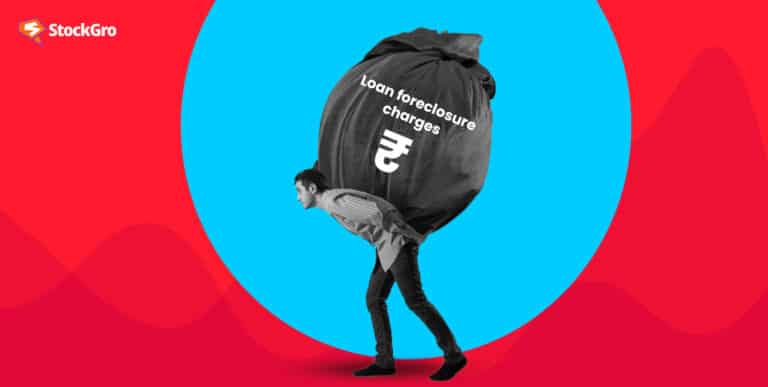
The State Bank of India at the end of last year made headlines by announcing a hike in its MCLR or Marginal Cost of Funds based Lending Rate. This decision sparked a domino effect: Punjab National Bank (PNB), IDFC Bank, Bank of Baroda, and HDFC Bank, all of which subsequently raised their lending rates.
However, how does this affect the typical borrower? What’s impact of MCLR hike on personal loan? Check out the blog to learn more.
You may also like: Fundamental Analysis of HDFC Bank Ltd.
What is MCLR?
The MCLR is a benchmark rate set by banks, below which they cannot lend. It’s the minimum interest rate a bank charges on loans to cover costs and stay profitable. The RBI introduced this system in April 2016 to improve the transparency of monetary policy. It replaced the previous base rate system with a more transparent and effective one.
It used to take banks a significant amount of time to modify their lending rates for borrowers, even after the RBI had decreased the repo rate. But with MCLR interest rates are set according to each customer’s related risk factor.
In this system, banks are required to adjust their interest rates promptly following any changes in the repo rate. The objective behind this is to enhance transparency in how interest rates for bank loans are calculated, ensuring that the rates are honest for both consumers and banking institutions.
Also read: Bank rate vs. Repo rate – Understanding the key differences
MCLR calculation explained
There are four factors that are taken into account when calculating MCLR.
- Tenure: Reflecting the risk associated with the duration of a loan, the tenure premium is added to the MCLR. Longer loans carry more risk, and this is accounted for in the lending rate.
- Marginal Cost of Funds (MCOF): This includes the cost of deposits and borrowings, essentially reflecting how much it costs the bank to acquire additional funds.
- Negative carry on Cash Reserve Ratio (CRR): A specific proportion of bank deposits must be kept on reserve with the RBI by the banks. Since this reserve earns no interest, it represents a cost to the bank, termed a ‘negative carry’.
- Operating costs: These constitute all costs that banks incur due to the operations of the bank on a day-to-day basis, which include salary, rent, and utilities. The operating costs are considered in MCLR, so rates also have costs for the bank’s operations in them.
To calculate MCLR, banks combine these elements: MCOF + Negative carry on CRR + Operating costs + Tenor Premium. This provides the rate below which the bank cannot give loans.
The MCLR system ensures that banks adjust their lending rates based on their current cost of funds. It is reviewed periodically, typically every month or quarter, allowing banks to align their rates with the latest market conditions.
This mechanism enhances the transparency of the rate-setting process and ensures faster transmission of policy rate changes to borrowers.
Loans linked with MCLR
Floating rate loans like auto loans, home loans, and personal loans from banks are linked to the MCLR. This means changes in MCLR directly affect the interest rates on these loans, impacting repayment amounts. So, the impact of MCLR hike on personal loans will lead to higher monthly repayments (EMIs), while a decrease will lower them.
When a bank approves a loan, it sets the interest rate based on its MCLR at that time. This rate isn’t fixed for the lifetime of the loan but is subject to change. The adjustments occur at predefined intervals, known as the reset period, which is typically once a year.
For example, if you take out a loan with an MCLR of 7.25%, that rate will stay the same until the next reset date, regardless of any fluctuations in the MCLR during that period.
In addition to the MCLR, banks also apply a spread to calculate the final interest rate for a loan. This spread covers various costs, including the bank’s risk. Banks have the option to apply a spread of up to 25 basis points on their MCLR.
For instance, if the MCLR is 11%, the bank may offer a rate of interest of 11.25%. The spread that the bank imposes is shown by the 0.25% variation in the two rates.
You may also like: The pros and cons of investing in floating-rate fixed deposits
Implications of MCLR
First and foremost, the goal of the MCLR system is to guarantee that banks swiftly modify their lending rates in reaction to shifts in the RBI policy rates. This helps in addressing the issue of delays in the transmission of rate changes to consumers. As a result, when there’s a change, banks are expected to promptly reflect this in the interest rates.
The spread, which is the additional rate added to the base rate to set the final interest rate of a loan, is also regulated under the MCLR system. This means that even with an increase in MCLR, the impact on the personal loan rate may not be overly significant unless there has been a change in the borrower’s risk profile or creditworthiness.
This aspect of the MCLR system helps to safeguard borrowers from disproportionate increases in their loan interest rates.
Another key advantage of the MCLR system is the enhanced transparency it offers in the pricing of loans. Borrowers can now have a better understanding of how their interest rates are connected to the market dynamics, which in turn facilitates improved financial planning.
Knowing that loan repayments may change in line with MCLR adjustments allows borrowers to anticipate and manage their finances more effectively.
Difference between MCLR and EBLR
MCLR, in essence, is the internal benchmark that has to take into account the bank’s cost of funds, including deposit rates and operational costs, which essentially make loan rates indicative of the bank’s financial health.
Conversely, EBLR (External Benchmark Lending Rate) is directly linked to external benchmarks like repo rates or yields on treasury bills, ensuring the loan rates move in sync with broader economic changes.
It is noted that since 2019 banks moved from MCLR to EBLR in order to simplify the lending mechanism. Despite the stark difference between MCLR and EBLR, banks are adhering to EBLR in order for lending rates to directly impact bank policies.
New borrowers now do not have the option but to choose loans linked to external benchmarks. Hence there will be no impact of MCLR hike on personal loan rates.
All bank loans that were issued between April 2016 and October 2019 are linked to the MCLR. Hence existing borrowers with loans linked to MCLR have the option to switch to EBLR. However, it’s a one-way decision that cannot be reversed.
Can Borrowers Change The Benchmark During Their Loan Tenure? MCLR Vs EBLR | StartUp Central
Bottomline
Knowing the impact of MCLR hikes on personal loan rates is important. A rise in MCLR leads to higher interest rates and affects monthly repayments. However, being informed about MCLR enables borrowers to tackle changes effectively by monitoring market trends and exploring options like loan tenure extension or refinancing.

